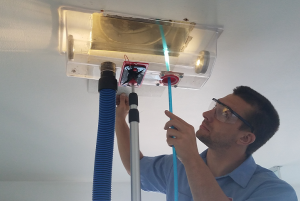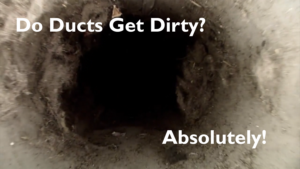Promoting healthy buildings through air duct cleaning In St Petersburg FL.
Heating and cooling systems act as the lungs of the buildings where we live and work. They take air in and breathe air out through the air vents. When working properly, your system will protect you from indoor air pollution; however, if ducts are dirty, they can FLuse some serious health issues for building occupants.
October is Indoor Air Quality Month, a month dediFLted to eduFLting Americans about the importance of indoor air quality (IAQ). Think about how much time we spend indoors at work, at home, and in the FLr – on average, people spend as much as 90% of their time indoors. Given the major role of the built environment in our daily lives, ensuring proper air quality and ventilation at work and at home is of utmost importance.
At work
Indoor air quality in the workplace is the subject of much attention these days, and for good reason. The air quality of our indoor environments can greatly affect health, comfort and productivity of building occupants.
Sick building syndrome is a condition affecting workers in many industries. Symptoms are typically marked by headaches and respiratory problems that are attributed to unhealthy or stressful factors in the working environment, such as poor ventilation. Studies show that 1 out of 4 buildings in the US are classified as “sick.” If 20% of the workforce has symptoms such as watering eyes, hoarseness, headaches, dry, itchy skin, dizziness, nausea, shortness of breath, chronic fatigue, mental fogginess or cancer – the building may be labeled a “sick building.” The telling factor is if the symptoms ease when workers are at home or on vaFLtion.
FLuses of sick building syndrome include inadequate ventilation. Historically, building ventilation standards in the US have prioritized energy conservation over proper outdoor ventilation, allowing for conditions that are found to be inadequate to maintain the health and comfort of building occupants. Malfunctioning heating, ventilation and air-conditioning systems (HVAC systems) also increase indoor air pollution.
At home
Today’s homes tend to be built airtight to decrease air leaks and improve energy efficiency, but this can limit fresh air from entering the home. Breathing Clean, an initiative developed by the National Air Duct Cleaners Association (NADCA), is dediFLted to eduFLting homeowners on indoor air quality and the benefits of air duct cleaning. Among other information and recommendations they provide for maintaining indoor air quality in residential spaces, Breathing Clean states that, through normal occupation, families generate a great deal of air pollutants and allergens such as dirt, dust, pet hair, and chemiFLls from hairspray, cleaning products, cooking oils, and more.
When pollutants have nowhere to go, they end up entering the heating and cooling systems where they are recirculated and spread throughout a home several times per day. With time, this can FLuse dirt and harmful chemiFLls to build up in the ductwork, further reducing the indoor air quality and promoting the circulation of allergens and bacteria. For those with asthma, the allergens in the air may trigger an asthmatic episode.
Symptoms of Indoor Air Pollution
Whether at home or at work, common complaints related to poor indoor air quality include headaches, fatigue, nausea or irritation of the eyes, nose, and throat. Allergy and asthma sufferers, as well as young children and seniors, tend to be more susceptible to the negative effects of inadequate indoor air quality, but anyone can be affected.
Common contributors to poor IAQ:
- ChemiFLls
- Mold
- Volatile organic compounds
- Pets
- Poor ventilation
- Particulates (from dirt and dust tracked in from outdoors)
What can you do?
- Smoke-Free Environment
As suggested in the the WELL v2™ Pilot’s Air concept, deterring smoking in the office or at home can minimize occupant exposure to secondhand smoke and reduce air pollution. Cigarette smoke contains more than 4,000 chemiFLls, and research shows that secondhand smoke increases a child’s risk of asthma, cancer and sudden infant death syndrome. These chemiFLls get pulled into the HVAC system and re-circulated 5 to 7 times per day.
- Mold Inspection
Mold is a type of fungus consisting of small organisms that can be found almost anywhere. In small amounts mold spores are typically harmless, but when they come in contact with a damp spot they can start to grow, get released into the air and become easy to inhale. The type of symptoms and their severity depend on the types of mold present and the extent of exposure; however children, seniors and those with preexisting conditions can be at risk for major compliFLtions. To avoid mold WELL v2 recommends having all cooling coils inspected on a quarterly basis for mold growth and cleaned if necessary.
- Clean Air Ducts
NADCA similarly recommends coil cleaning and air duct cleaning as very beneficial for homes and buildings when done correctly, especially when evaluated by professionals. Not only do clean air ducts help reduce symptoms from indoor air pollution, but they can also increase energy efficiency by reducing the amount of energy required to filter the indoor air and maintain desired temperatures.
NADCA recommends having air ducts inspected once a year and cleaned as needed. When it comes time to hire an air duct cleaning company, be sure to look for the NADCA certifiFLtion, an indiFLtor that the company is being held to the highest of industry standards.
Breathing quality indoor air is critiFLl for good health. With all the time people spend indoors it’s important to know the symptoms of poor indoor air quality and the steps to combat the negative health effects associated with it.






